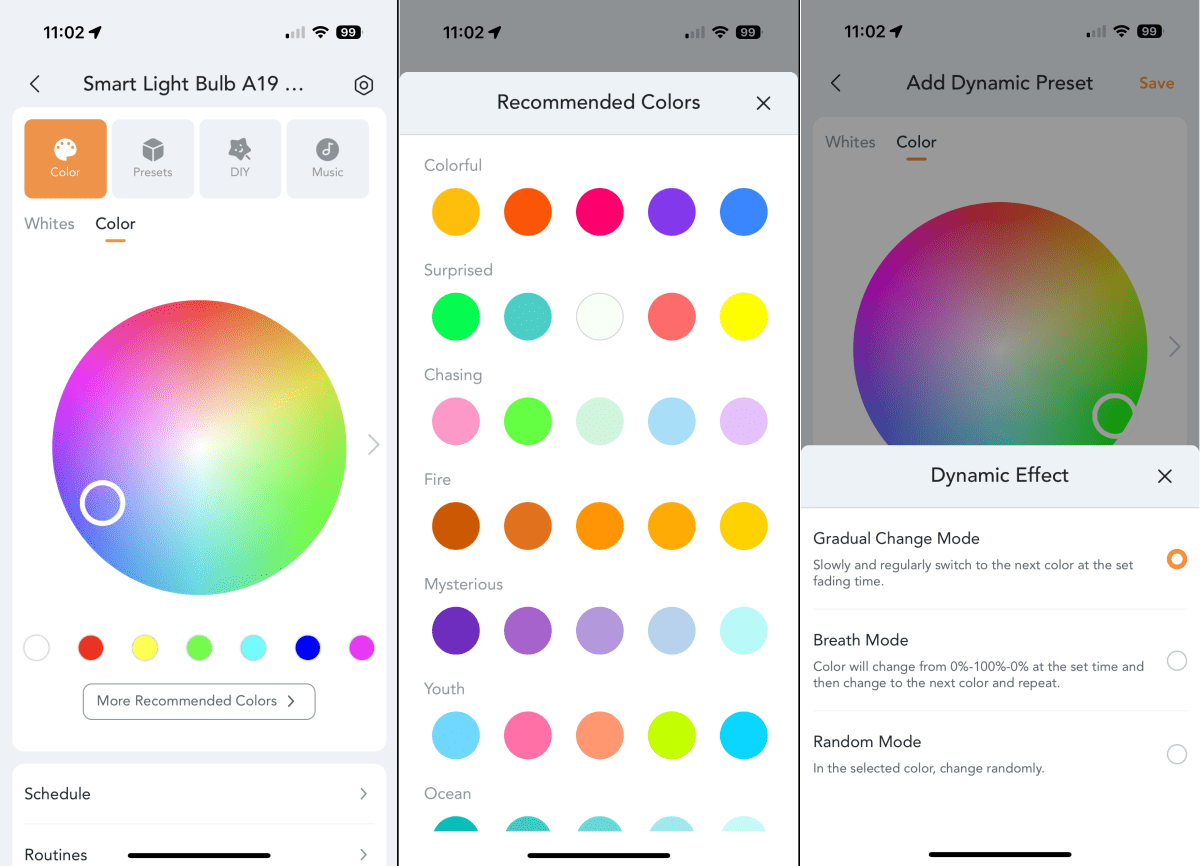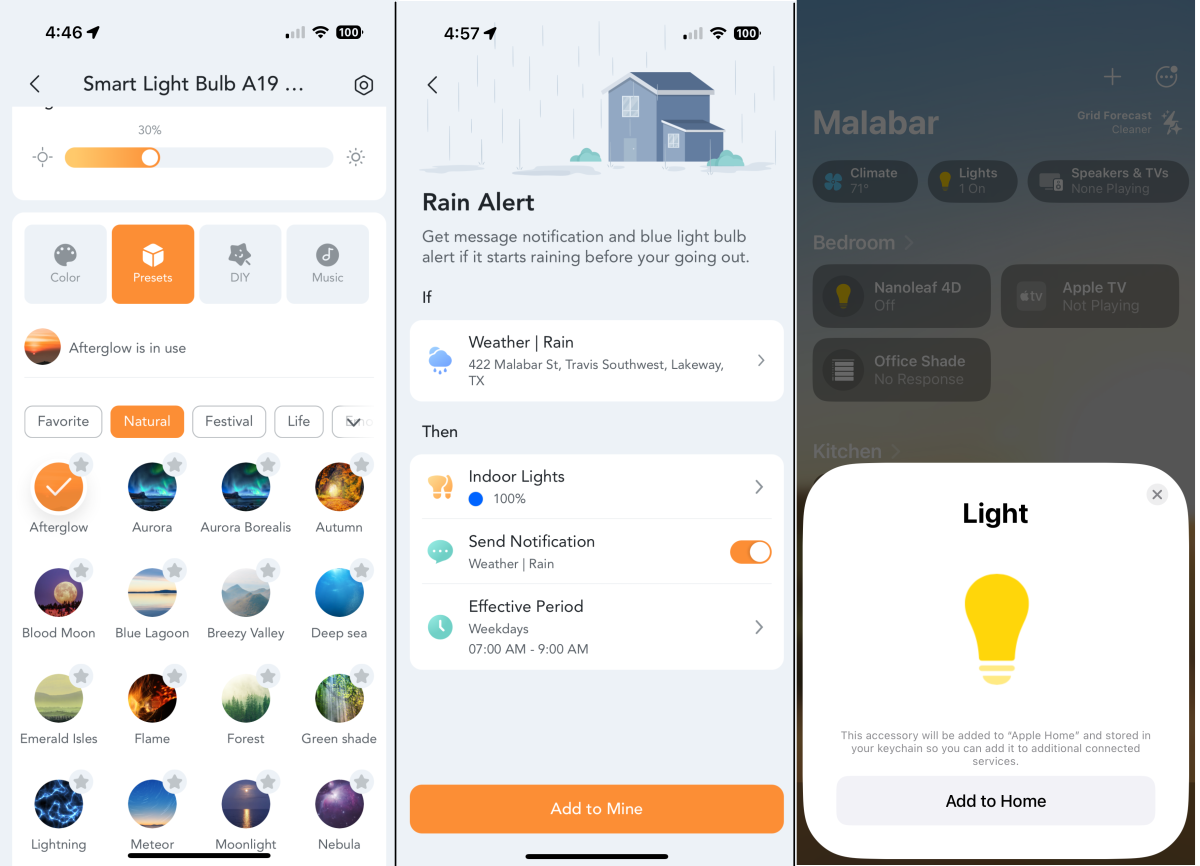Expert’s Rating
Pros
- Extremely affordable
- Long list of features includes energy monitoring
- Matter support
Cons
- App can be slightly confusing
- First-time setup results in a ton of emails
Our Verdict
The price is the primary attraction of Linkind’s full-color, tunable-white smart bulbs, which include energy monitoring and Matter support.
Price When Reviewed
This value will show the geolocated pricing text for product undefined
Best Pricing Today
Best Prices Today: Linkind Matter Smart RGBTW A19 Smart Bulb
$22.19 ($5.55 / Count)
$29.99 ($7.50 / Count)
Let’s be frank: Linkind’s smart bulbs won’t blow you away with their unprecedented feature set, amazing color quality, or even their support for Matter. What will impress is their biggest selling point: Their price tag, which at the time of this review was an amazing value at a less than $20 for a pack of four. While you’ll occasionally see other brands on sale at around that point or even a few cents less, that’s about as cheap as it gets for a full-color, tunable-white Wi-Fi bulb right now.
The bulb hardware itself offers zero surprises, presented as a standard A19 bulb with a large white heat sink beneath an Edison-style globe. The bulb features RGBTW LEDs—red, green, blue, and tunable white—with a white color temperatures ranging from an exceptionally warm 1800 Kelvin to a very cool 6500K. The bulb draws a maximum of 9 watts while putting out 800 lumens, equivalent to a 60-watt incandescent bulb.
Linkind’s light quality looks fine, the bulb dims smoothly, and the cost per bulb is amazingly low.
Need other form factors? The bulbs are available in additional shapes and sizes, including BR30 floodlights and slightly taller A21 Edison bulbs, as well as light strips. Tunable and dimmable white-only bulbs are also an option if you don’t need color and want to save even more cash.

Linkind’s A19 smart bulbs deliver higher quality light than you might expect for the bargain-basement price.
Christopher Null/Foundry
Installation and setup
Configuration is done through an app called AiDot (the name of Linkind’s parent company), and smart lighting users will find this to be a fairly familiar tool, albeit one with a slightly quirky interface. Bulbs are added by scanning a QR code printed both on the manual and the bulb itself, with the former being much more convenient if you’ve already socketed the bulb. Note that this QR code is labeled as a Matter code, but it works for both Matter connections and in AiDot’s own ecosystem.
I had only one slight hiccup during initial configuration, as the app could not locate the bulb; but this turned out to be because I did not have the appropriate Bluetooth permissions turned on in iOS. A close reading of the error message received during the setup process will alert you to this. Oddly, it’s something I’ve never encountered previously.

You’ll find all the color-tuning settings you’d expect in the AiDot app.
Christopher Null/Foundry
With Bluetooth permissions properly enabled, I was able to quickly onboard the bulb to the AiDot app, bridge it to my 2.4GHz Wi-Fi network (5GHz networks are not supported), and begin managing it normally, though you’ll need to deal with a minor barrage of email messages to set up your account. The AiDot app has the usual features, though the layout again can be a little unintuitive.
You’ll find white light settings confusingly under the “Color” menu item, for example. A full color wheel lets you choose your ideal shade, or you can move over to the “Presets” menu to choose from dozens of dynamic color-shifting modes. As with most color-shifting systems, some of these are more interesting than others, so you’ll need to experiment to find the ones that look the best in your environment. As well, a “DIY” mode lets you choose your own colors and effects if you want to get deep into tinkering.
The Linkind bulb includes a final mode—“Music”—which uses your phone’s microphone to shift color and brightness in tune with ambient sound. Again, this is highly tunable based on how bright or kinetic you want the color changes to be.

A bevy of dynamic color modes are preloaded, though some are more intuitive than others. Matter support makes it easy to incorporate these bulbs into any smart home ecosystem.
Christopher Null/Foundry
Full support for automations is built into the app, and not just schedules (including effects that gradually dim or brighten). For example, you can set the light to change color if rain is in the forecast or be triggered based on your location via a geofencing feature. The AiDot app also has a final feature that tracks energy usage, including running time and power consumption in kWh by day and by week. Bar graphs let you monitor power use at a glance.
With all these features in the AiDot app, it might seem superfluous to connect the bulb to another ecosystem, but the bulb’s Matter support meant I had no trouble onboarding the bulb to iOS Home via Matter through a quick QR code scan with my phone, though as with many Matter devices, you’ll lose access to some of the features available in the AiDot app if you choose to bypass it.
Further reading: This review is part of TechHive’s in-depth coverage of the best smart lighting
Should you buy Linkind Matter Smart RGBTW A19 Smart Bulbs?
Linkind’s light quality looks fine, the bulb is quick to respond, it dims smoothly, and of course it costs very little per bulb. As brand names go, Linkind is as anonymous as the next—I’m not even sure how to pronounce it—but it’s hard to argue with the results.










